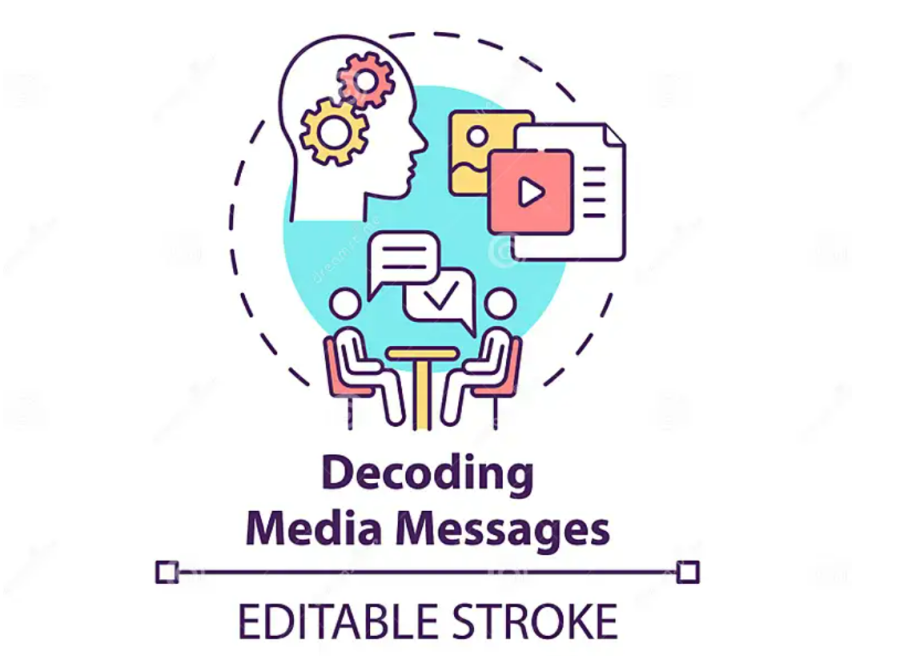The encoding/decoding model of communication was first developed by cultural researcher Stuart Hall in 1973.Stuart Hall titled his study Encoding and Decoding of Television Discourse.Hall’s essay presents a theoretical approach to how media messages are created, distributed, and interpreted. We refer to encoding as the message that is transmitted using the means necessary so that the person who is going to receive this message understands it in a certain way. This is done through a system of coded meanings, this is done verbally and non-verbally in a way so that the receiver understands de message. On the other hand decoding refers to how that audience to whom the message is aimed at receives and interprets and understands the message, it could be considered the process that information follows from the sender to how the receiver comprehends that information.
Now, what Stuart Hall stated was “the encoding process is organised through the operation of codes within the semantic chain of a discourse” (Hall, 1973). This process happens on a daily bases as we (most of the time as an audience) receive information in such a way that the media, whether; news, a program, a series or a movie always tend to fulfil their objective that we receive the information the way they want, leaving little room to interpret something other than the direct message they are trying to send. For example Hall’s theory suggests three main positions of decoding: dominant, negotiated, and oppositional decoding. A series like Stranger Things could be an example. The encoding process is part of the producers of the show, they will write a script for an audience to interpret a certain meaning, in which us being the audience will interpret and understand, we understand that it is a science fiction show in which we are going to sympathise with the characters, in this case eleven, being a little girl who has superpowers and has not been able to have a normal childhood or adequate development like the rest of the children in show around her, it makes us empathise with her and appreciate the character, this would be the decoding process.
:no_upscale()/cdn.vox-cdn.com/uploads/chorus_image/image/70900549/strangerthings1.0.jpg)

Overall, Hall Stuart’s encoding and decoding model provides insight into the dynamics of communication. It emphasises the implicit problem of the process and emphasises the role of cultural context in the construction of meaning. Coding, the construction of the sender’s message, is influenced by cultural norms and personal perspectives. Decoding by the receiver, on the other hand, involves interpreting messages through their own cultural lens. Stuart’s model reveals the possibility of misunderstandings and emphasises the dynamic nature of communication. Recognising the importance of context, it emphasises that effective communication requires shared norms. Finally, the framework promotes nuanced perspectives and encourages people to consider different perspectives to increase mutual understanding in the complex web of human interaction. This would vary a lot depending on who the receiver or the message, depending on their country, their age, their development and their ability to understand, each person could perceive the messages differently, giving them an alternative meaning.
Bibliography:
Reference list
Pillai, P. (1992). Rereading Stuart Hall’s Encoding/Decoding Model. Communication Theory, 2(3), pp.221–233. doi:https://doi.org/10.1111/j.1468-2885.1992.tb00040.x.
Shaw, A. (2017). Encoding and decoding affordances: Stuart Hall and interactive media technologies. Media, Culture & Society, 39(4), pp.592–602. doi:https://doi.org/10.1177/0163443717692741.
Xie, Y., Al Imran, M., Yasin, B., Syed, A., Bin, S., Alsagoff, L. and Ang (2022). Multicultural Education an Overview of Stuart Hall’s Encoding and Decoding Theory with Film Communication. Multicultural Education, [online] 8(1). doi:https://doi.org/10.5281/zenodo.5894796.

